How to use the new-look Snapchat like a pro, whether you're new to the app or you've been using it for years
Level 1: The Basics. In this section, I'll do a basic overview of the app's features and how to use them.

The layout
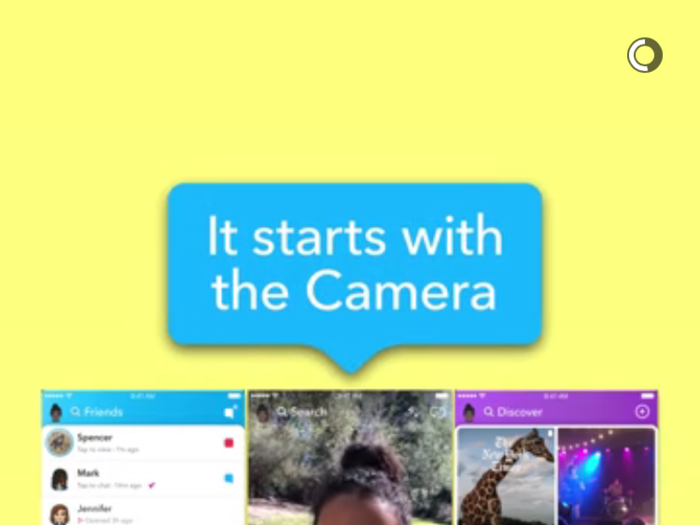
Snapchat's layout is designed to be simple, no-frills, and easy-to-navigate. It is anything but.
The key is to resist thinking to hard. There are three major screens:
1. The camera, which is always the first screen you'll land on upon opening the app.
2. The "Friends" page
3. The "Discover" page
You navigate between these pages by swiping left or right from the camera.
If you've ever used the Facebook or Instagram apps, swiping to navigate to a new section of the app will seem natural. After all, social mobile apps have been borrowing innovative functions and designs from Snapchat for years now.
The camera is the default start-up screen. From there, you'll swipe right to view your "Friends" page.
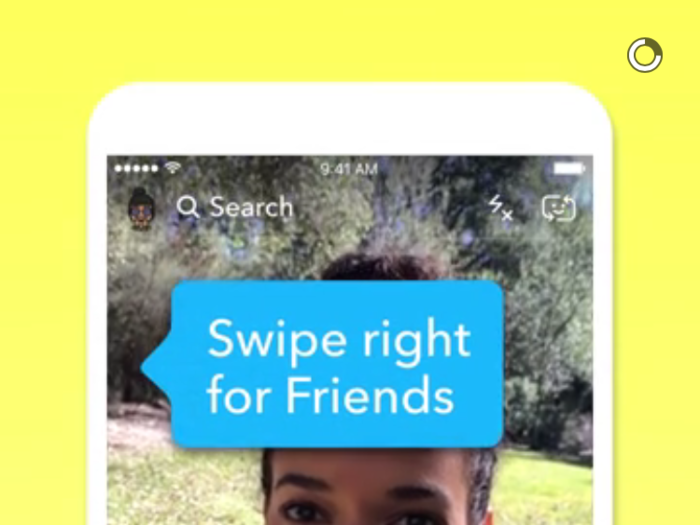
Or, you can swipe left to see the "Discover" page. We'll go into more detail about what this page does later.
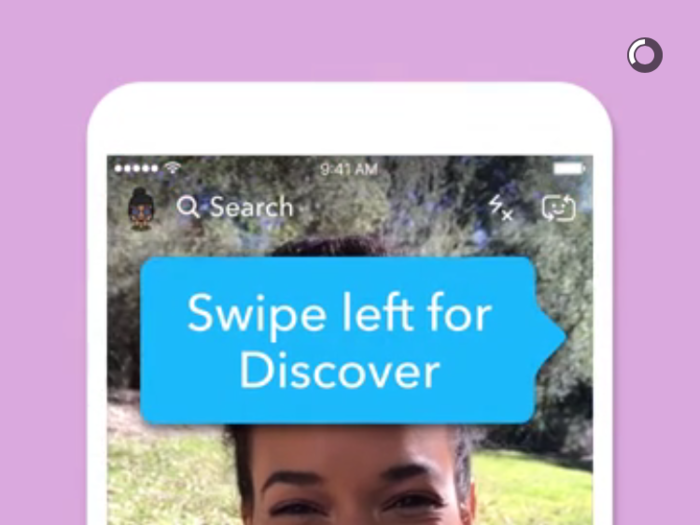
Luckily, the new Snapchat update includes some instructional videos upon the first start up.
You can also view your profile from the camera screen, by clicking on the circle in the top-left corner.

From this menu, you can add friends, adjust your app's settings, and sync contacts from your phone.
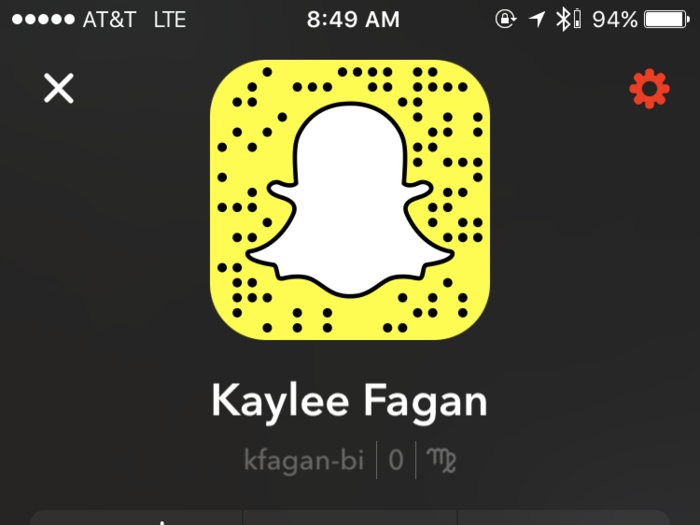
Trophies and "Snap points" are essentially rewards you get for using the app. The points aren't redeemable for anything, and the trophies don't unlock any other features, so this feature doesn't get a lot of attention.
After adjusting your settings and having a look around, you're ready to take your first photo!
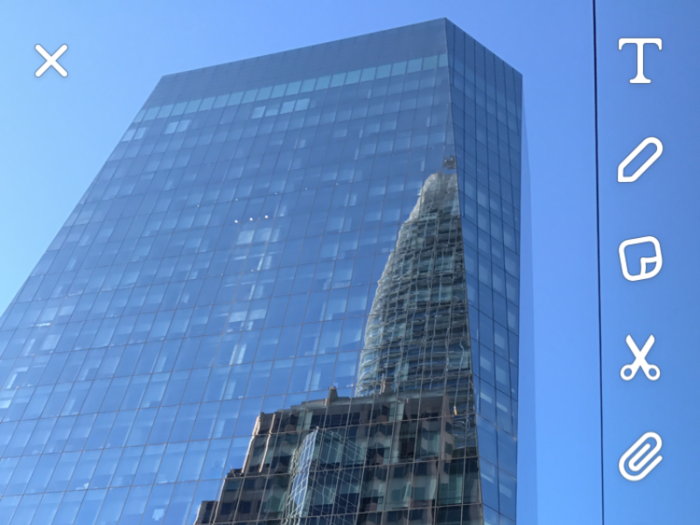
I snapped this shot outside of the Business Insider San Francisco office. Snapchat works just like every other smartphone camera. Tap the screen to focus, and the big round button to take.
This isn't a bad photo, but what makes Snapchat different from every other social platform is what comes next.
After you've captured your picture or video, you can swipe right to scroll through a series of filters and pre-built borders.

Like a lot of things in the Snapchat app, these filters and borders come and go based on the time of year, weather, your location, and other variants. In fact, you'll likely have a different set of borders to choose from the next time you open the app.
Don't worry though, the most popular ones are almost always available.
For example, this colorful border was available the morning I took our example photo. It was gone by noon.

I took this photo at 9 a.m. in San Francisco, but this filter made my picture look like I took it in the late evening in rural Iowa. I like it. Onward!
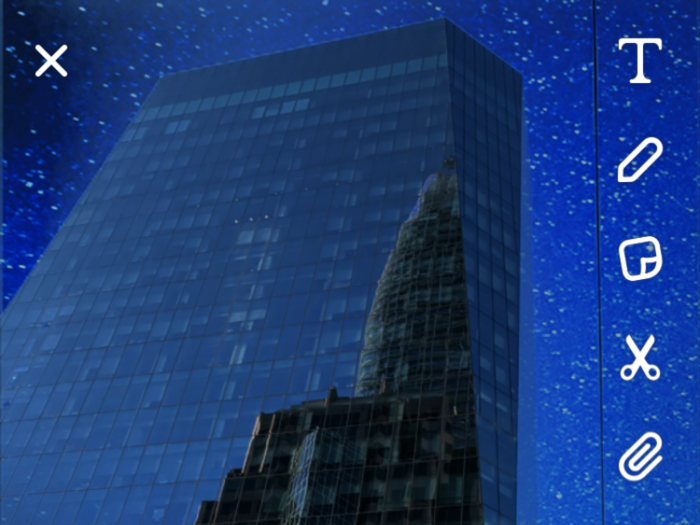
Level 2: Getting Into The Weeds. In this section, I'll outline some of the features that make Snapchat unique, and how to get to them. First, let's turn our attention to the editor menu, aka the white buttons on the right side of our photo.
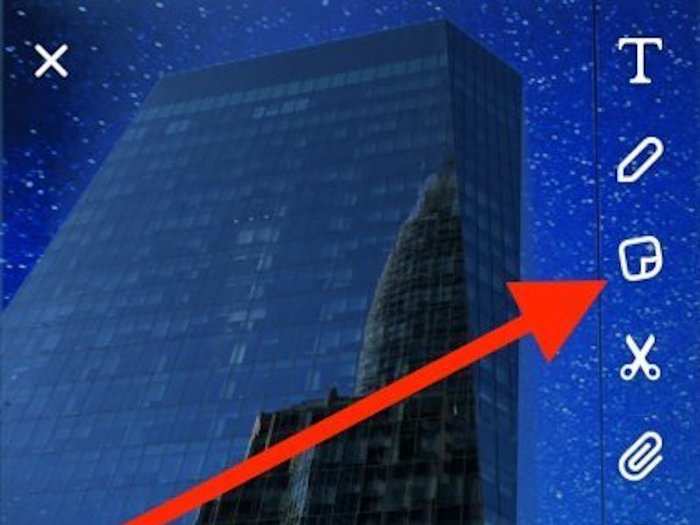
This menu contains everything you need to make some hilarious, cute, and screenshot-worthy snaps.
First, I'm going to focus on the button third from the top. It takes us to Snapchat's seemingly endless supply of stickers.
I wonder how many hours of my life I've spent looking through the bottomless pit of stickers, searching for the perfect emoticon or little cartoon pineapple to express my feelings.
The most popular stickers are at the top.
The time, temperature, and MPH stickers have historically been very popular, and were unique to Snapchat at the time that they were introduced.
However, they used to be listed among the filters, and the recent decision to move them to stickers has been met with a lot of pushback from users who were jarred by the sudden change.
The full list of emojis is also included in stickers. You'll find them by clicking the smiley face in the bar at the bottom of the stickers page.
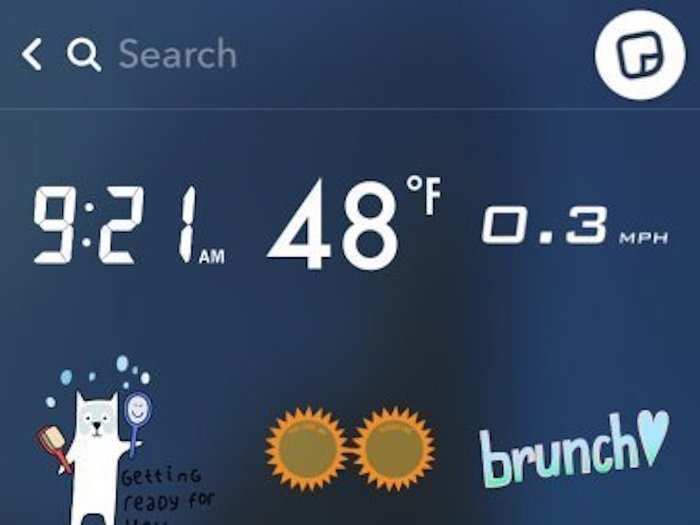
Unfortunately, skin tone options for emojis are not available on Snapchat.
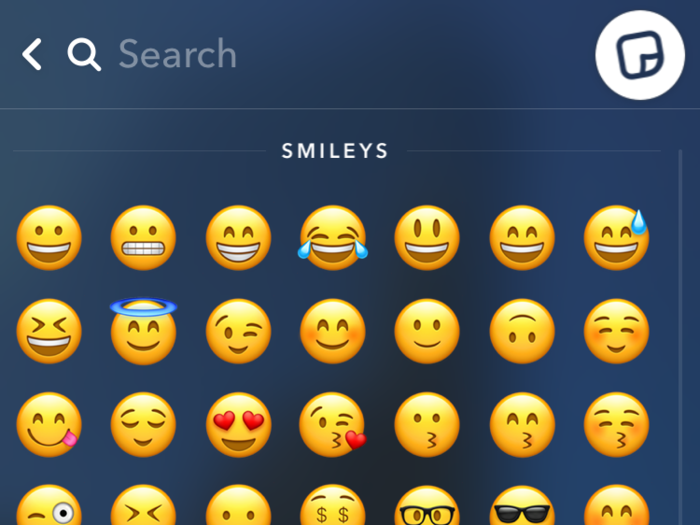
Snapchat also offers stickers featuring Bitmoji, which are personalized cartoons used to express different emotions and even interact with your friends' cartoon selves.
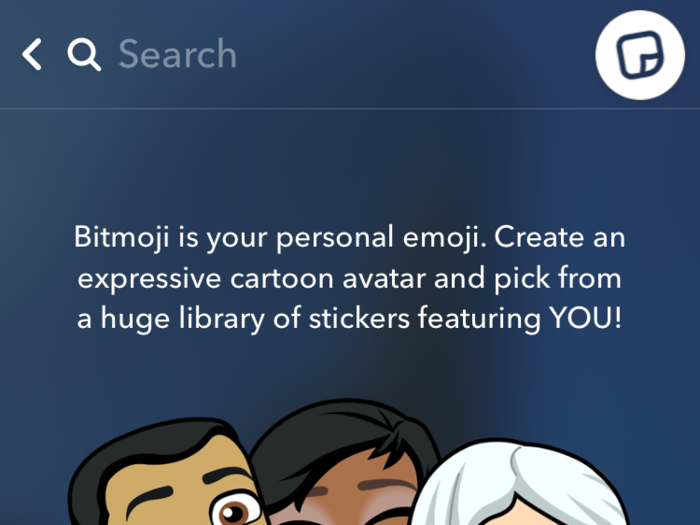
If you want to use this feature, you'll have to create your own Bitmoji in the Bitmoji app first. (Snap bought Bitstrips, the makers of Bitmoji, back in 2016).
Bitmoji is a whole separate beast though, and entirely optional, so we'll walk through that app together another day.
I've littered our original picture with stickers, and I'm pretty happy with it. You can move stickers by simply holding them with your finger, and resize or tilt them by "pinching" them with two fingers. Moving right along!
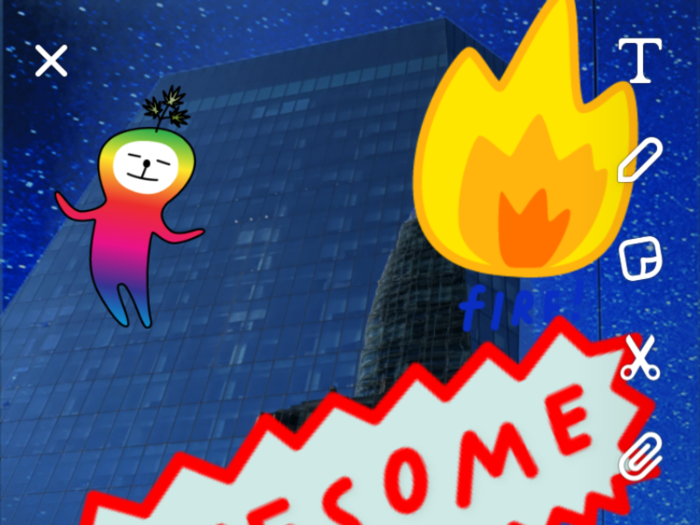
You can also add your own text to a picture. By simply clicking the photo anywhere on the screen, you'll bring up a black bar in which you can type whatever you please.
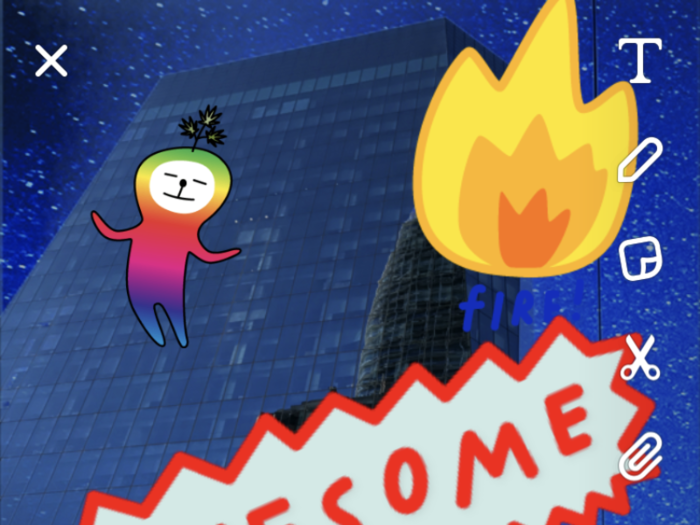
In earlier versions of the app, this black bar with white text is exactly how the text would show up in your finished product.
Now, Snapchat offers a wide range of fonts, colors, and other customizations for text, but the black bar continues to be a popular choice because it's the quickest way to add text and gives the image a "classic" Snapchat look.
One of the most appealing and unique aspects of Snapchat is the ability to post very quickly, with few clicks and not much thought, making it more convenient than taking a photo in your phone's camera and simply sending it via SMS.
When you type in text, you'll see a wide range of options for fonts, highlights and other customizations for your text just above the keyboard.

I went with a design that has italic white text and black highlight.
But now it's covering some of my stickers!
That's better. Like stickers, text can be re-sized and tilted by using two fingers to "pinch and pull" it across the screen.
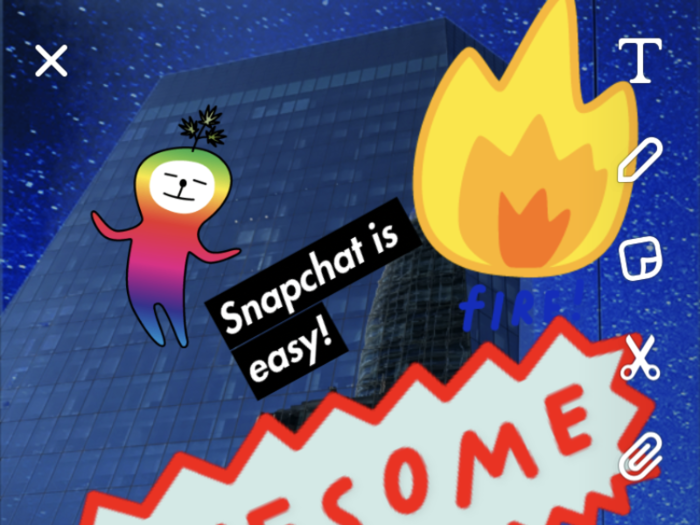
The pencil tool, located in the top right of the image, can be used to draw pictures by hand.
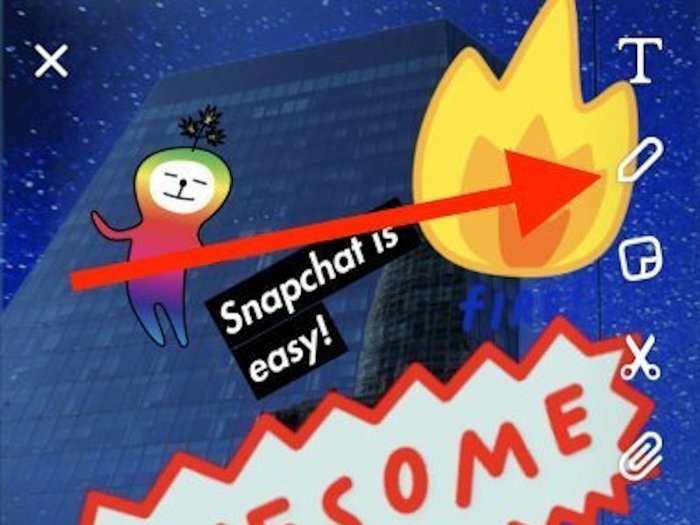
You can select a color from the drop-down palette and the width of your brush. I drew a smiley face and gave him some crazy hair.
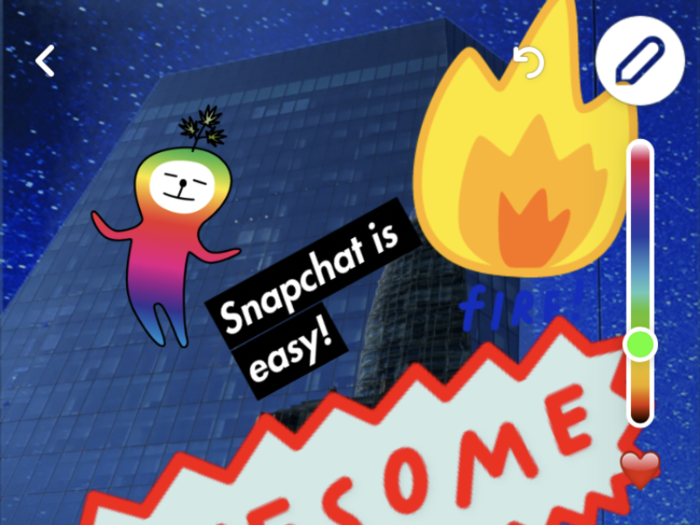
This is the final product! A very silly photo that barely resembles the first image I captured. Now we'll learn how to share it with the world and save it for later (if we so choose).

Because this is Snapchat, we have the option to limit the time that your friends will be able to see this image. By clicking the stopwatch button in your photo editor menu, you can choose to show the image for up to ten seconds, or use the new "infinity" option.
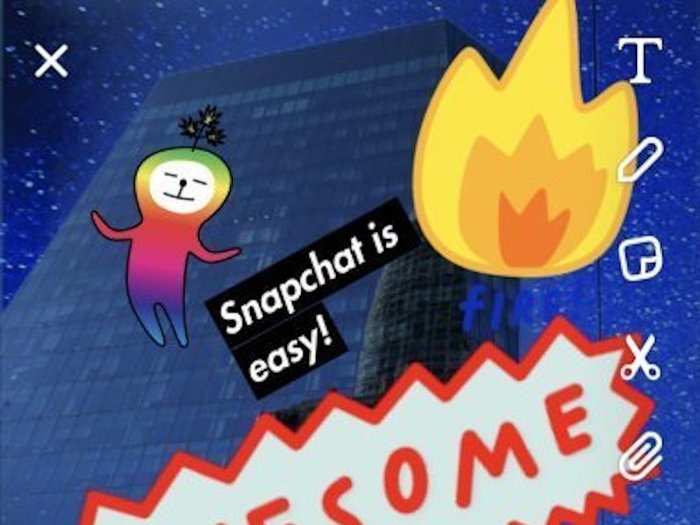
This feature was integral to the app's initial success, but is largely ignored today.
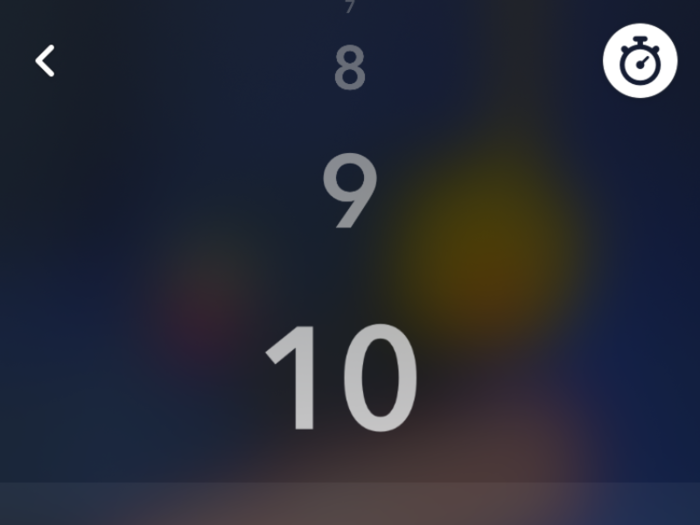
In the early days of Snapchat, pictures could only be viewed for a few seconds at a time. Back then, Snapchat was used mainly for sending lewd images or funny faces, things that the user didn't want to be saved or reshared.
The infinity option, along with the fact that direct photo and video messages can be replayed once for up to 24 hours and saved forever via screenshot, renders Snapchat's initial gimmick somewhat obsolete. But since many users post multiple photos or videos that are meant to appear on a sequence, it can still be useful.
You can also save your image at any point to your phone's photos folder (aka "Camera roll") by clicking the "Save" button on the bottom left of the image screen. Snapchat also saves images to an in-app vault called "Memories."
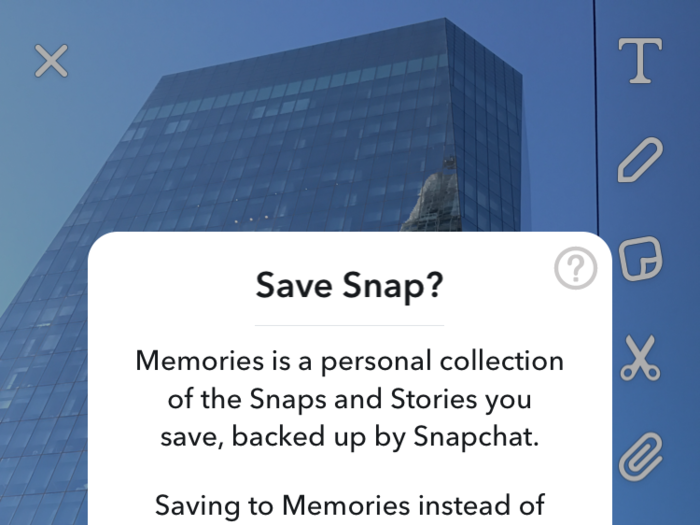
Memories aren't a very important aspect of this app. They're simply a list of your saved pictures, that sits right next to your regular photos album. Pretty redundant, really. You can open your Memories vault by swiping up from the camera screen.
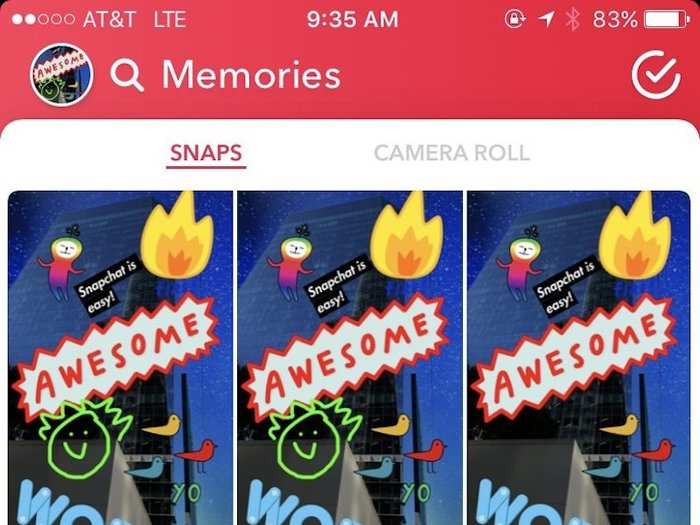
When you're happy with your fully edited photo, tapping the "Send to" arrow in the bottom right corner of the screen brings you to this page.
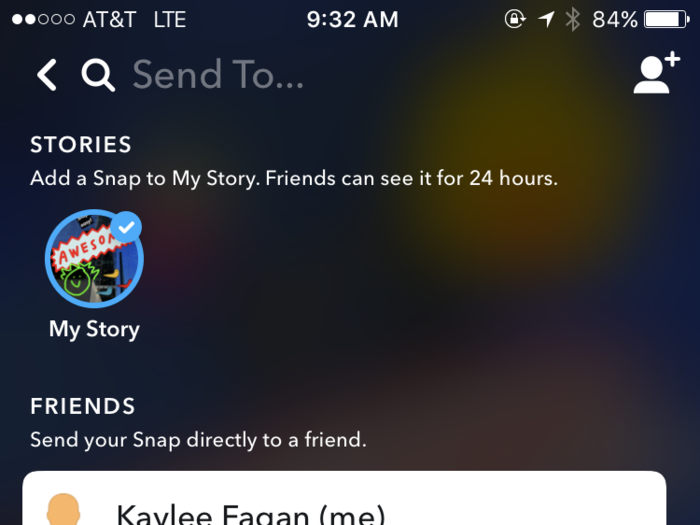
Snapchat essentially offers two options:
1. Send your image directly to a friend or group of friends.
2. Post the image on your "Story," which is a public feed any of your friends can see for the next 24 hours.
Here, you'll select which individual friends or groups of friends you want to send the picture to in private messages. A blue checkmark will appear on all the people and stories you've selected to send the picture to.
Simply hit send and you're done! You've sent your first snap!
I made a new Snapchat account for this tutorial, which is why it appears as though I have no friends. I swear I have friends.
To view snaps that are sent to you, or to view public stories your friends have posted, you'll return to your "Friends" page, which you get to by swiping right from Snapchat's home screen. Tapping on a name will open a direct message, and tapping their circular photo will play their public story.

This page is one of the most controversial aspects of the newest Snapchat update.
Before the update, stories and private messages were located on opposite ends of the app. Friends' stories were listed among and next to celebrity and marketing content, on the "Discover" side. This gave users the feeling that they were friends with and had an inside connection with their idols and the brands that they admire, and was very unique to Snapchat.
Now, celebrity and ad content is grouped with news and editorial, and your friends' stories are embedded within your personal inbox.
Snap says this new layout, while perhaps confusing for users who have grown accustomed to the old version, is the easiest way to serve users all of the content that they "care about the most." The notion is logical, but many users argue it assumes a little bit too much about individual users' motivations, and removes that sense of connection with the artists, musicians, politicians, or other celebrities that they've chosen to follow.
Snapchat Stories, as well as direct image and video messages, expand to take up the full screen, so here's a quick guide to how to skip ahead, save pictures, and get back to your inbox:
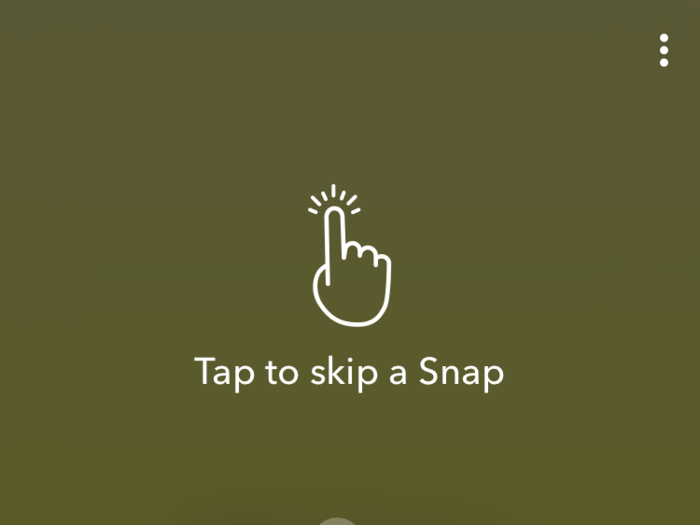
Starting a text chat with a friend is done the same way you view direct photo messages, aka "snaps": Just tap on a friend's name and a chat box will open.
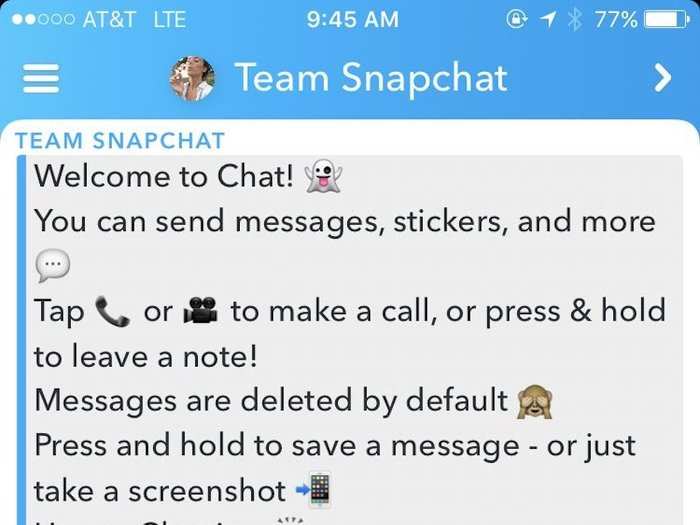
Just like images, all text, stickers or emojis you send will disappear when you leave the window unless you tap them, which locks them in place and gives them a gray highlight, like above.
The inbox window also features calling and video calling, which you access with the gray phone and video camera buttons.
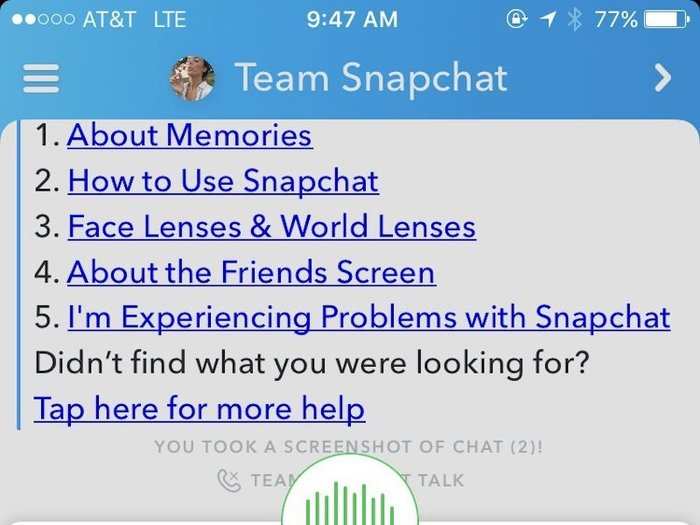
These are sort of neat to have, but have never been very popular with users for one reason or another. Perhaps people are more accustomed to calling friends via their phone app or Skype.
Moving right along! Let's talk about Discover.
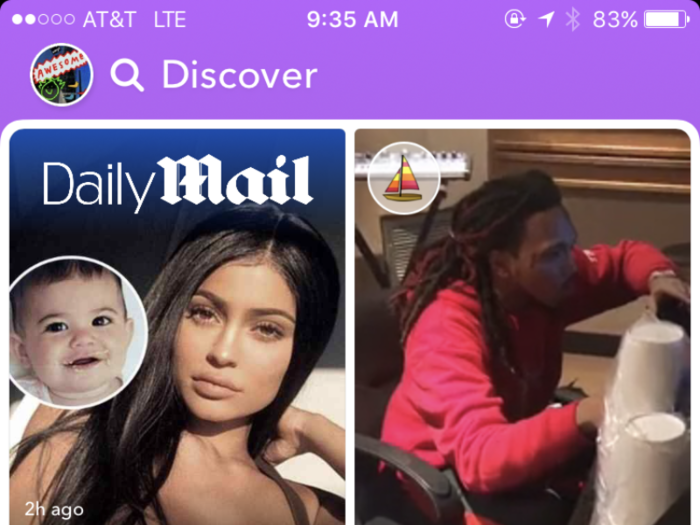
This page is where you'll find celebrity snaps, community stories (created by multiple users in a single area or event), news, and advertising.
This page is similar to Twitter's "Moments" page, and Instagram's search tab. Some of the content on this page is people and companies you've subscribed to, but most of it is curated in an effort to sell you stuff.
Because everything is formatted to fit inside these boxes, and mushed together in one big collage, it's difficult to tell what's what. This lack of clarity is one of the major reasons people are mad about the post-update layout.
The good news is that nearly all of the content on this page is bright, colorful, and intriguing. Since looking at snaps requires much less reading than Twitter or Facebook, the Discover page is great for killing time and getting up to date with the news in an engaging and low-impact way.
Level 3: The Good Stuff. In this section, we'll talk about the more advanced features that make Snapchat unique, and that tend to go viral on almost every other social media platform. First things first: The augmented-reality filters.

These include flower crowns, dog ears, and occasionally dancing hot dogs, for both your front and rear-facing cameras.
To unlock these, just tap and hold with one finger anywhere on the camera screen, and swipe left and right between them.
Like everything else in Snapchat, the selection of AR filters varies from day to day. The day of writing, this little hamster was bouncing a heart on his butt. It made me laugh, so I positioned him on my desk.
Snapchat's AR dog filter is definitely the most recognizable, partly thanks to Kylie Jenner, who has been posting less and less on Snapchat since the controversial update.

Face Swap is another highly popular AR filter.
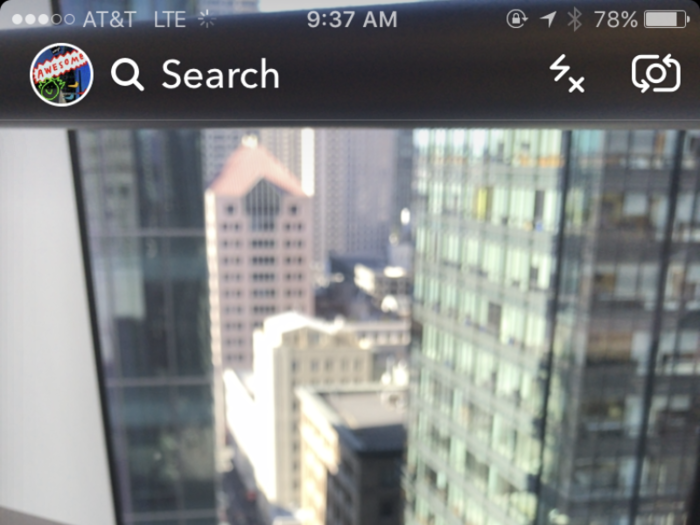
You can swap faces between two people in the camera view, or with a furry animal or celebrity. It's up to you!
When it's available, it's always at the far right of the carousel of AR options.
One of my personal favorite features in Snapchat is the "Scissors" tool.
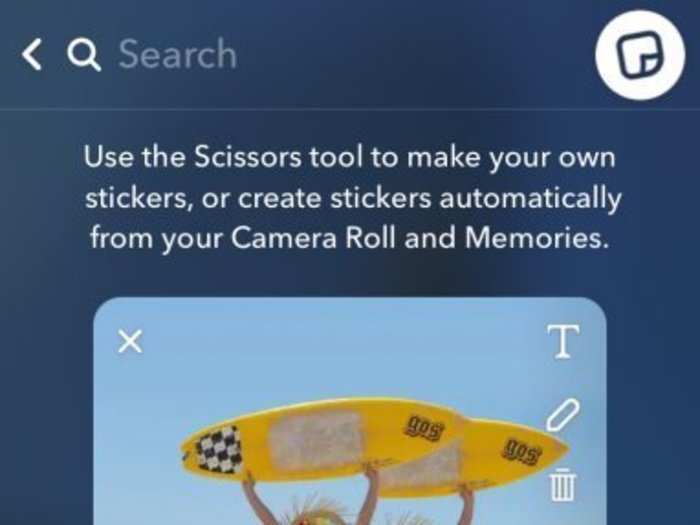
Snapchat's Scissors tool lets you take a person, item, or any subject matter from your personal photo and make it a sticker, which you can use in future snaps.
You do this by selecting the scissors tool, and drawing a circle around the item you'd like to make a sticker with your finger. Then just open up the sticker menu, select the scissors tab and bam! There it is!
This tool is really useful because it allows you to create Photoshop-quality images with no additional photo-editing software or technical experience.
For example, I have a single mason jar with water in it on my desk.
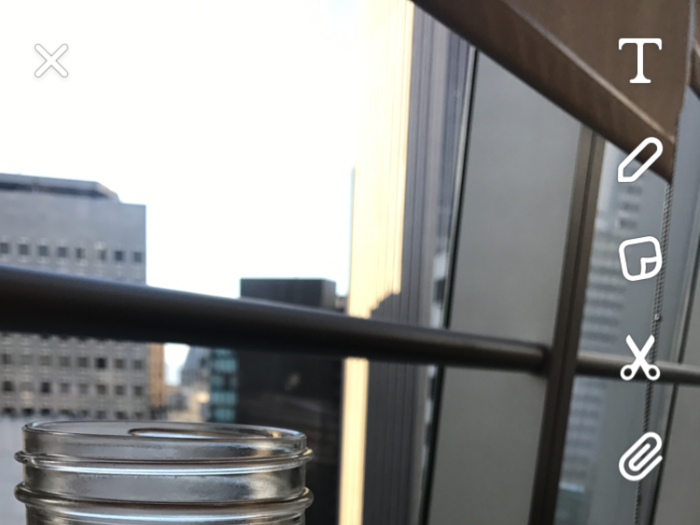
But with the help of the scissors tool, I now have three mason jars. Each a little smaller than the last.
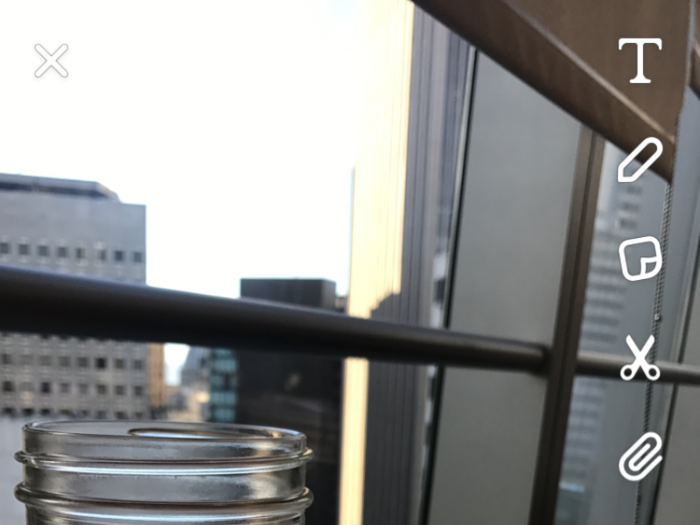
My favorite way to use this tool is while taking a photo of a group of people. Make one person's face a sticker, and put it over all the other faces in the group. Honestly, it's hilarious every time.
Then, there's the Snap Map.
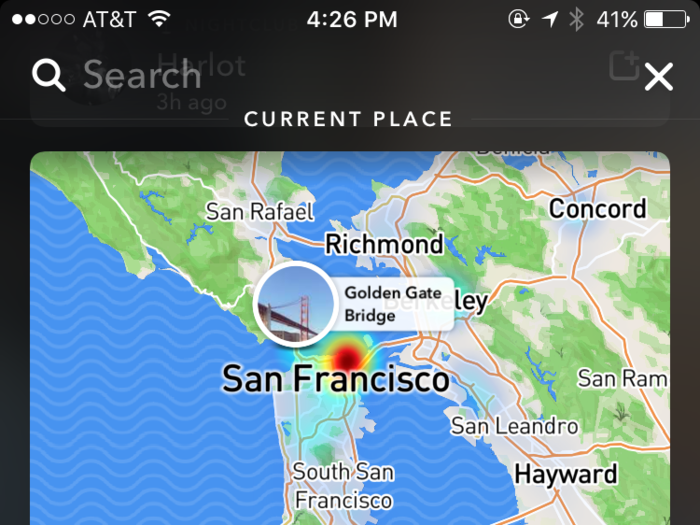
You'll arrive at the Snap Map by swiping down from the camera screen.
The location-tracking technology can show you businesses near you, a live heat map of Snapchat users, location-based Snapchat Stories, and your friends' locations in real time (if they have the feature turned on).
This feature has been controversial since its introduction. Many users were immediately critical (with good reason) of a map that would give their location to everyone in their friends list, but the functionality has come a long way and has quickly become one of the app's most recognizable features.
You can also add links to snaps now!
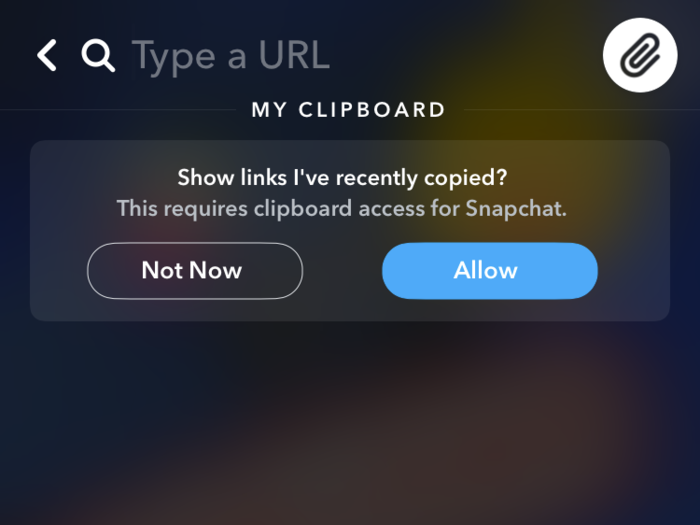
This is another pretty fresh addition to the app, that up until recently was very self-contained and indifferent to the outside social world.
External links were previously available for advertisers and news outlets only, but are now available for everyone.
You can attach a link to an image by clicking the paperclip, located right below the scissors tool on your image-editing menu.
Finally, Snapchat's most helpful feature is the ability to chat with the support team in real time.
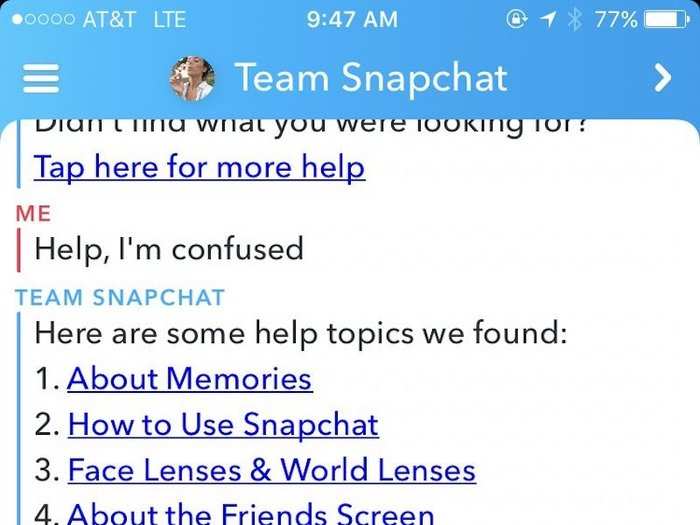
Team Snapchat appears in everyone's friends list, and are just a click away in the event that you're confused or don't know how to use a specific feature.
Popular Right Now
Popular Keywords
- India’s wearables market decline
- Vivo V40 Pro vs OnePlus 12R
- Nothing Phone (2a) Plus vs OnePlus Nord 4
- Upcoming smartphones launching in August
- Nothing Phone (2a) review
- Current Location in Google
- Hide Whatsapp Messages
- Phone is hacked or not
- Whatsapp Deleted Messages
- Download photos from Whatsapp
- Instagram Messages
- How to lock facebook profile
- Android 14
- Unfollowed on Instagram
Advertisement